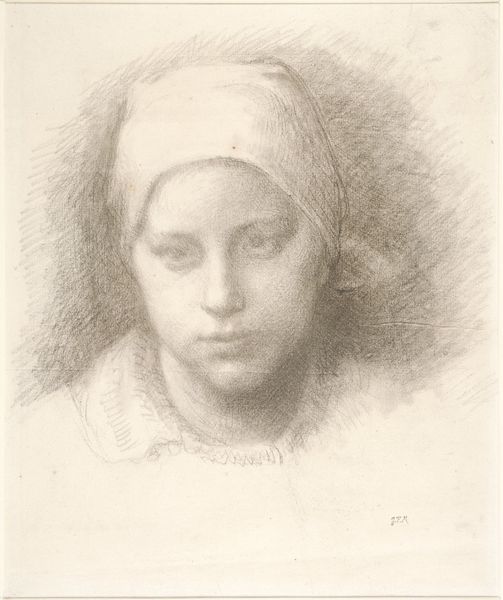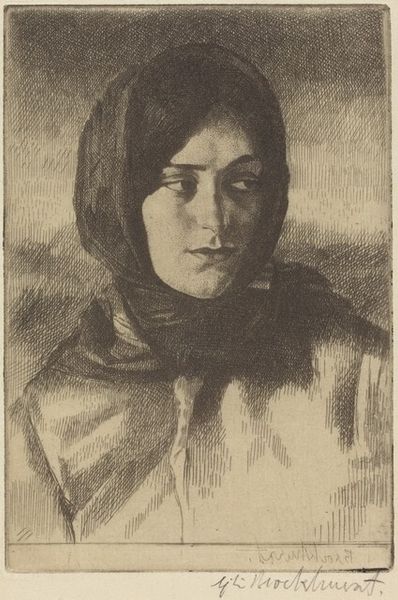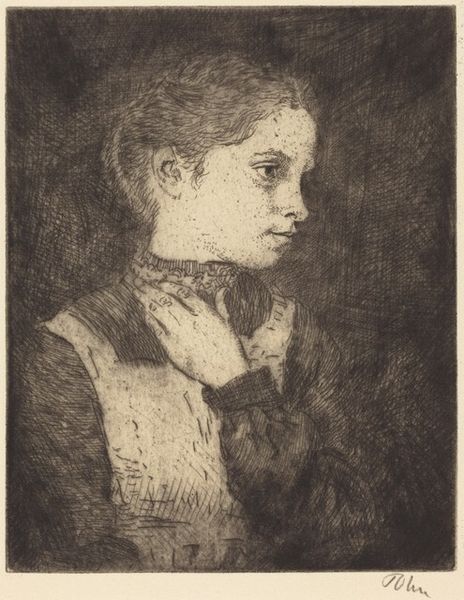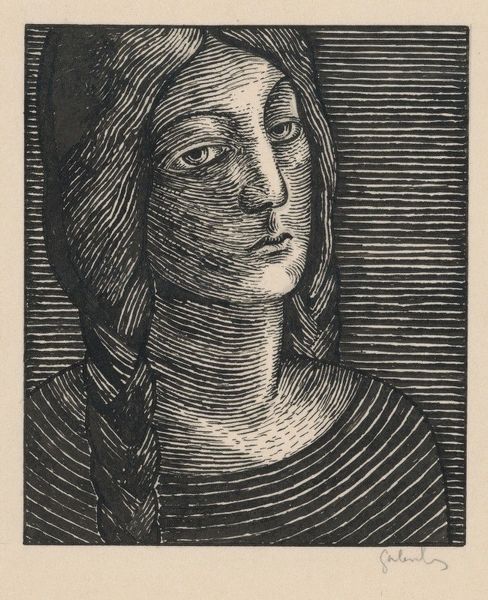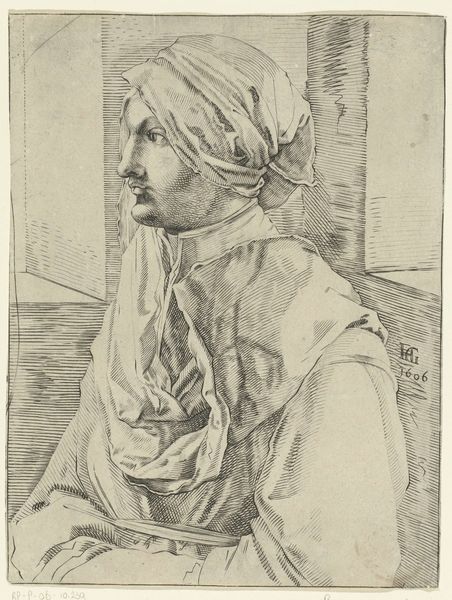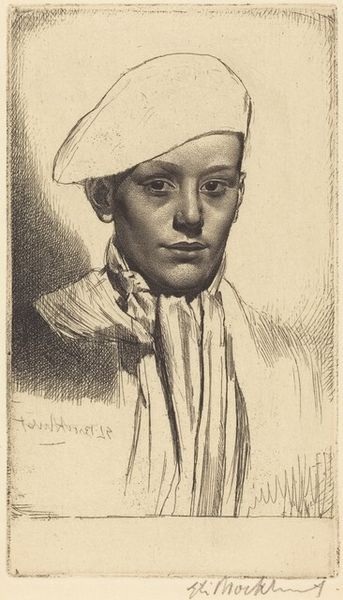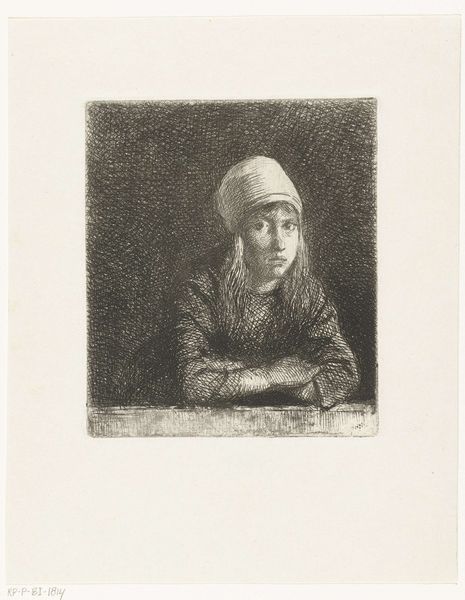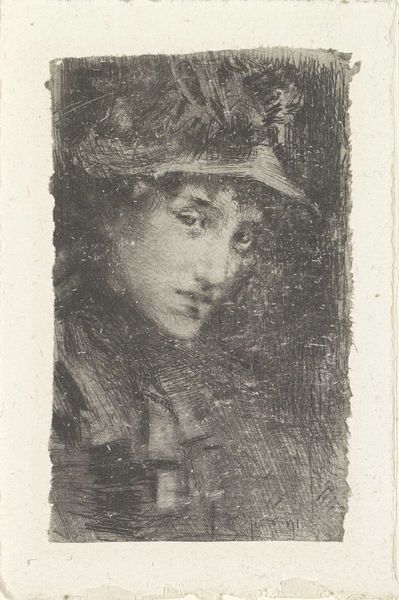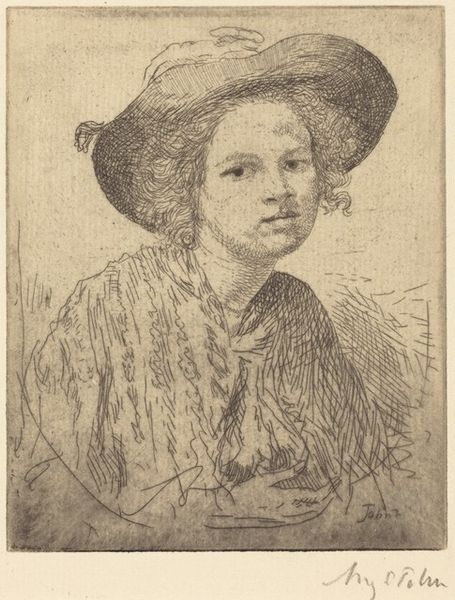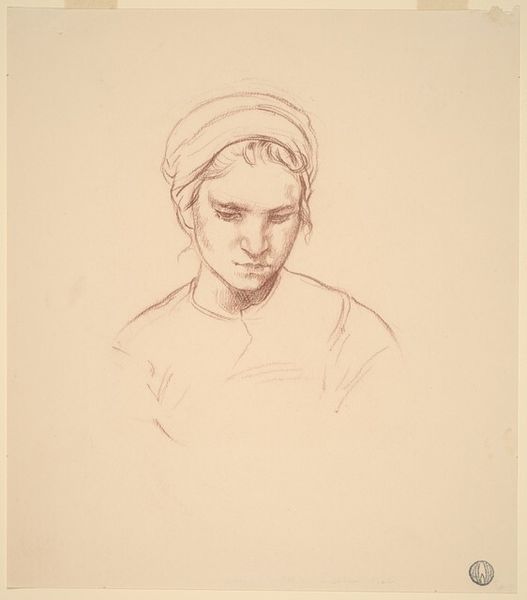
drawing, print, etching
#
portrait
#
drawing
# print
#
etching
#
pencil drawing
#
portrait drawing
#
realism
Copyright: Public Domain: Artvee
Curator: This is "Gulli II," an etching made in 1918 by Anders Zorn. Editor: There's an intensity in the woman's gaze. The use of shadow makes it feel both intimate and a little haunting, despite the seemingly straightforward portrait style. Curator: Zorn was known for his etchings, achieving remarkable tonal range through cross-hatching and varied line weights. The market at the time celebrated these virtuoso printmaking displays, solidifying Zorn’s status as a sought-after portraitist amongst the European elite. Editor: Looking at the sharp lines around her face, I wonder about the labor involved. Creating such detail by etching would require a precise process. Do we know about the economic situation for printmakers in 1918? Curator: Absolutely, the printmaking boom allowed artists such as Zorn to operate within networks of galleries that showed and distributed multiples to ever larger publics, influencing tastes and styles across broad geographies. It created an alternative market outside the formal Salon system. Editor: That access meant something different for the sitter, too, didn’t it? It's fascinating how her clothes become less defined the farther away we look from her face; like material possessions are not the subject of the piece. Curator: Exactly, her almost confrontational gaze gives an egalitarian mood to the piece. Though technically skilled and representative of its time, "Gulli II" reflects an interesting approach for such an in-demand artist; less idealized, more a character study. Editor: This makes me appreciate how Zorn highlights the skill required to transform a metal plate into something so emotionally resonant. You can almost see the manual process, like tool meeting the plate. It elevates it beyond just an image. Curator: Indeed, analyzing "Gulli II" unveils not just Zorn's mastery but the wider industry, public tastes and artist market strategies of early twentieth-century portraiture. Editor: And for me, it's in understanding the physical effort and social context involved in creating a relatively commonplace etching that elevates it, rendering the ordinary beautiful.
Comments
No comments
Be the first to comment and join the conversation on the ultimate creative platform.
